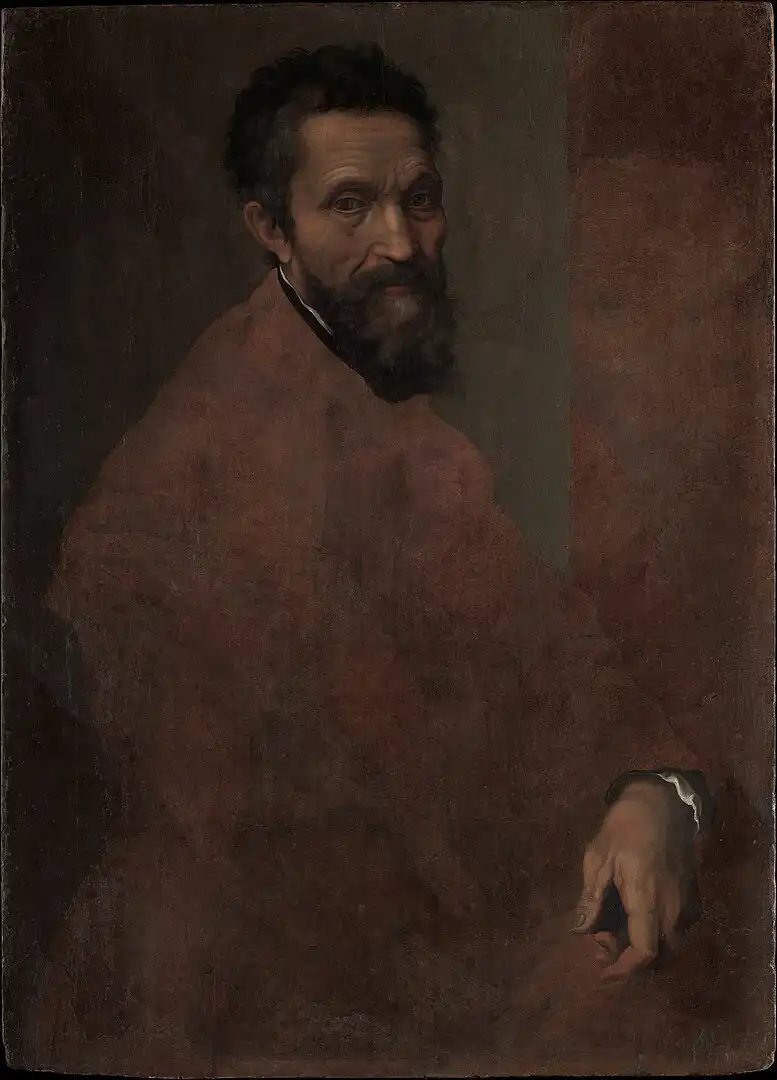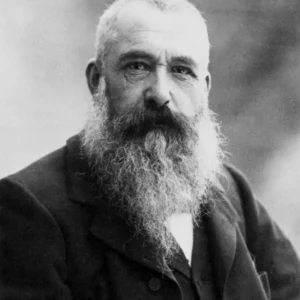Michelangelo Buonarroti is a name that resonates through the annals of art history. Known as one of the greatest artists of the Renaissance, Michelangelo’s work has left an indelible mark on the world. Among his many masterpieces, the Sistine Chapel ceiling remains his most iconic achievement. But who was Michelangelo, and how did he create this breathtaking work of art? Let’s dive into the life, struggles, and genius of the man behind the Sistine Chapel.
Early Life: A Boy with a Passion for Art
Michelangelo was born on March 6, 1475, in Caprese, Italy. From a young age, he showed a remarkable talent for art, much to the dismay of his father, who wanted him to pursue a more “respectable” career. At 13, Michelangelo became an apprentice to Domenico Ghirlandaio, a renowned Florentine painter. This marked the beginning of his journey into the world of art.
The Medici Influence: Shaping a Young Artist
Michelangelo’s talent soon caught the attention of Lorenzo de’ Medici, the ruler of Florence. Under the Medici’s patronage, Michelangelo was exposed to classical art, philosophy, and the company of some of the greatest minds of the Renaissance. This period profoundly influenced his artistic style and vision.
First Major Works: The Beginnings of a Legend
By his early 20s, Michelangelo had already created two of his most famous works: “The Pietà“ and “David.“
- “The Pietà” (1499): A stunning sculpture of Mary holding the body of Jesus, showcasing Michelangelo’s mastery of emotion and detail.
- “David” (1504): A colossal marble statue that became a symbol of human strength and beauty.
These works established Michelangelo as a leading artist of his time.
The Call to Rome: Michelangelo’s Rise to Fame
In 1508, Pope Julius II summoned Michelangelo to Rome for a monumental task: painting the ceiling of the Sistine Chapel. Initially, Michelangelo hesitated. He considered himself a sculptor, not a painter. But the Pope was persistent, and Michelangelo eventually accepted the challenge.
The Sistine Chapel: A Monumental Challenge
The Sistine Chapel, built in the late 15th century, was already a significant religious site. Michelangelo’s task was to transform its plain ceiling into a masterpiece. The project was daunting:
- The ceiling spanned 12,000 square feet.
- Michelangelo had to work in fresco, a challenging and unforgiving medium.
- He had to paint while lying on his back, often in uncomfortable positions.
The Ceiling Project: A Labor of Love and Struggle
For four years (1508–1512), Michelangelo dedicated himself to the Sistine Chapel ceiling. The work was grueling:
- He worked alone, refusing assistance except for mixing paints.
- The physical strain caused him severe pain, and he even wrote a poem about his suffering.
- Despite the challenges, Michelangelo’s passion and determination never wavered.
Iconic Scenes: Decoding the Sistine Chapel Ceiling
The ceiling features over 300 figures, each telling a story from the Bible. Some of the most famous scenes include:
- “The Creation of Adam”: The iconic image of God reaching out to Adam, symbolizing the spark of life.
- “The Last Judgment”: A dramatic depiction of the final judgment of souls.
- “The Flood”: A vivid portrayal of Noah’s Ark and the Great Flood.
- “The Prophets”: Larger-than-life figures representing biblical prophets.
The Technique: Michelangelo’s Artistic Process
Michelangelo’s use of fresco painting was revolutionary. Fresco involves applying paint to wet plaster, requiring quick and precise work. Michelangelo also incorporated techniques from sculpture, giving his figures a three-dimensional quality.
The Colors of the Sistine Chapel: A Vibrant Masterpiece
The Sistine Chapel’s colors are breathtaking, thanks to Michelangelo’s careful selection of pigments. Over the centuries, the ceiling underwent several restorations to preserve its vibrancy. The most recent restoration (1980–1994) revealed the original brilliance of Michelangelo’s work.
The Hidden Messages: Symbolism in the Sistine Chapel
Michelangelo infused the ceiling with deep religious and philosophical themes. For example:
- “The Creation of Adam” reflects the Renaissance belief in the divine potential of humanity.
- The figures of the prophets and sibyls symbolize the connection between the Old Testament and classical wisdom.
The Completion: A Triumph of Art and Faith
When the Sistine Chapel ceiling was unveiled in 1512, it left viewers in awe. Michelangelo’s work was hailed as a masterpiece, solidifying his reputation as a genius.
Later Works: Beyond the Sistine Chapel
Michelangelo continued to create groundbreaking art, including:
- “The Last Judgment” (1536–1541): A powerful mural in the Sistine Chapel.
- Architectural projects like St. Peter’s Basilica in Rome.
Michelangelo’s Rivalries: The Competitive World of Renaissance Art
Michelangelo’s relationships with other artists, such as Leonardo da Vinci and Raphael, were often tense. These rivalries pushed him to innovate and excel.
Personal Life: The Man Behind the Masterpieces
Michelangelo was a deeply private and introspective man. He never married and dedicated his life to his art. His letters and poetry reveal a complex personality, torn between faith, ambition, and self-doubt.
The Sistine Chapel Today: A Living Legacy
Today, the Sistine Chapel attracts millions of visitors each year. It remains a symbol of artistic achievement and spiritual devotion.
Michelangelo’s Influence on Art and Culture
Michelangelo’s work inspired countless artists and shaped the course of Western art. His emphasis on human anatomy, emotion, and grandeur set new standards for creativity.
Controversies and Criticisms: A Complex Legacy
While Michelangelo’s work is celebrated, it has also faced criticism. Some argue that the restoration efforts altered the original colors, while others question the theological accuracy of his depictions.
Lessons from Michelangelo: Creativity, Perseverance, and Vision
Michelangelo’s life teaches us the importance of:
- Passion: He poured his heart into every project.
- Perseverance: He overcame immense challenges to create timeless art.
- Vision: He saw beauty where others saw only a blank ceiling.
Conclusion: Why Michelangelo’s Vision Endures
Michelangelo’s Sistine Chapel is more than just a painting; it’s a testament to the power of human creativity and faith. His legacy continues to inspire and awe, reminding us of the heights we can achieve when we dare to dream.
FAQs:
- How long did it take Michelangelo to paint the Sistine Chapel ceiling?
It took four years (1508–1512) to complete. - What techniques did Michelangelo use for the frescoes?
He used fresco painting, applying pigments to wet plaster. - What is the meaning behind “The Creation of Adam”?
It symbolizes the moment God gave life to Adam, reflecting the divine potential of humanity. - Did Michelangelo work alone on the Sistine Chapel?
Yes, he refused assistance except for mixing paints. - How has the Sistine Chapel been preserved over the centuries?
It has undergone several restorations, most notably from 1980 to 1994. - What were Michelangelo’s relationships with other Renaissance artists?
He had rivalries with Leonardo da Vinci and Raphael, which fueled his creativity. - Why did Michelangelo initially refuse to paint the Sistine Chapel?
He considered himself a sculptor, not a painter. - What challenges did Michelangelo face while painting the ceiling?
He worked in uncomfortable positions, suffered physical pain, and dealt with the technical difficulties of fresco painting. - How did Michelangelo’s work influence the Renaissance?
His emphasis on human anatomy and emotion set new standards for art. - What is the significance of the Sistine Chapel in the Vatican today?
It serves as a place of worship and a symbol of artistic and spiritual achievement.



